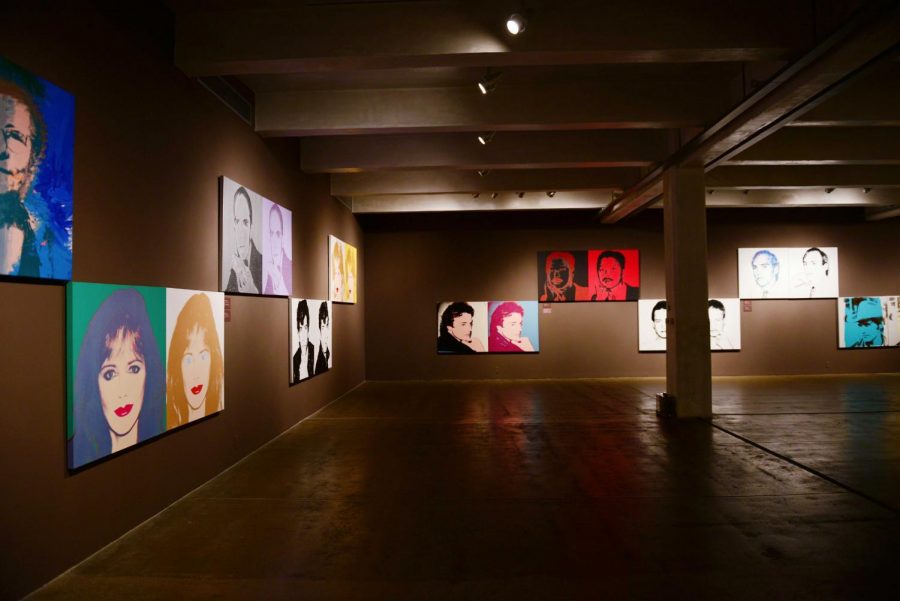New museum studies major proposed
Wu Caiyi | Senior Staff Photographer
Pitt students often intern at the Carnegie Art Museum and other Pittsburgh art museums, but the museums are closed due to the COVID-19 pandemic.
May 12, 2020
With the abundance of museums and cultural institutions in Pittsburgh, Pitt students may wonder how the many exhibits around them are created.
Students interested in the museum world can currently complete a museum studies minor through the history of art and architecture department, but the department is now working on a new major option. According to Gretchen Bender, the assistant chair and director of undergraduate studies for HAA, the curriculum has been in the works since fall 2018.
Bender said the new major was proposed to provide a more in-depth analysis of museums and their histories than the minor. With the addition of new introduction courses, students will have more information to help them understand the world of museum curation, she added.
“The major will differ from the minor in that it will have a more purposeful structure to it,” Bender said. “All students will start with the same introduction course and then they will work their way up into the more advanced courses from there.”
Bender and the HAA department have been working to create new courses that will give students the background information they need to pursue the major. For the new foundations course, Bender said the department is splitting up a previously existing course to create several more detailed classes.
“We’re building a whole suite of new courses for the major,” Bender said. “We split the previous foundations course apart and created new courses so that we are specifically focusing more intently on several of the concepts and topics that were addressed in that course.”
Alex Taylor, an assistant professor and academic curator in the HAA department, said the program is also heavily focused on career preparedness. With the help of hands-on exhibition curation, students will have the opportunity to develop skills that will be useful for future employment.
“Students [will be] engaged in the research questions that are the same kind of research questions that students in the HAA program have always been asking, but really seeing how those ways of thinking can be applied in real world scenarios,” Taylor said.
One foundational course for the existing minor and new major is the exhibition program. With the help of two different hands-on exhibition courses, students will have the opportunity to develop skills that will be useful for future employment. In the spring exhibition course, students research and develop an art exhibit in the University Art Gallery.
According to Taylor, this course helps students develop their own scholarly publications.
“For many of the students in Museum Studies, this is their first scholarly publication, so it’s great for their CV or if they are thinking of graduate school,” Taylor said. “The students get to showcase that they’ve written about a work of art in Pitt’s own collection.”
After developing the exhibit in the spring, a new group of students then uses this research the following fall semester to work on its display, design and production to bring the exhibit to life. When the exhibit opens, students from that course will give gallery tours and talk to the public about the featured artwork.
Another key part of both the museum studies major and minor is the internship program. Students in both the major and minor are required to have a semester-long internship at a local cultural institution. In the past, students have interned at large museums such as the Carnegie Museum of Natural History, the Carnegie Museum of Art and the Heinz History Center, in addition to smaller institutions like Rivers of Steel and the Silver Eye Center for Photography.
According to Taylor, who works to secure internships for each student, the internship program is specifically curated to a student’s interests.
“Our approach to the internships is kind of customized,” Taylor said. “We really try to identify projects and work that students can do that fit with their developing interests and professional aspirations.”
Jon Engel, a rising senior double majoring in computer science and Africana studies with a museum studies minor, said he thinks the minor is a great experience for anyone who might want to do museum work in the future. The program can be great for all students, even if they are not studying the history of art and architecture, he added.
“For people who aren’t art history majors and want to get involved in this program, the worst case scenario is that you have a job on your resumé that you can point to in other fields and show that you developed those skills, so it’s never a bad idea,” Engel said.
According to Bender, the HAA department is waiting on approval from Provost Ann Cudd’s office to officially approve the major for the upcoming fall semester. But due to the ongoing COVID-19 pandemic, Bender said she has started to think of alternatives to hands-on education, in case Pitt goes online in the fall.
“It’s obviously not ideal, because the curriculum is very much centered on the proximity of the wonderful institutions we have in Pittsburgh,” Bender said. “I think [the new curriculum] will be more of a creative course where students will work together as a group to build their own personal collections.”
Even though the program would change without access to Pittsburgh’s museums, Bender said she is interested in discussing the significance of museums in the presence of COVID-19.
“I’m actually pretty excited about the potential of thinking about what the museum actually is in the era of COVID,” Bender said. “I think [museums closing] actually might make our conversations even more relevant and meaningful for students at this particular point in time.”



